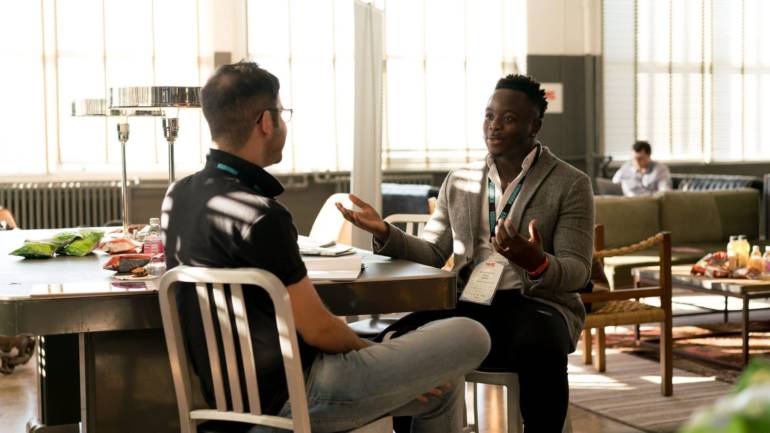Reality checks on Speed Interviewing whether you’re 22 or 62.
I recently sat at one of several company/employer-sponsored speed interviewing tables where rotating college students had a very brief time to distribute resumes, let us know who they were and ask questions of us. Sounds stressful but great doesn’t it? Or maybe not. What might make it not so great? Here are some things to think about.
I was informed in advance that several of the students would be in their forties, fifties, and sixties, reflecting the importance of lifelong learning as a function of long-term marketability and employability. Gone are the days when we can assume students will be in their late teens to mid-twenties.
What struck me the most throughout the sessions was the double headed emphasis on speed and brevity. Quality seemed to have been either assumed or overlooked due to haste. Also, when interviewing more mature students, the richness and value of their background often cannot be captured when the emphasis is exclusively on brevity and speed.
Following are my suggestions for improving the experience and success of speed interviewing sessions.
Before the Speed Interviewing Session:
1. Communicate to the students the names of the sponsoring companies, the representatives, and their primary expectations/needs.
2. Have each student spend time, individually or in a group, with the college/university’s Career Services Unit to make sure their message is well stated and congruent with the sponsors’ needs. If the college/university doesn’t have a great Career Services Unit, that’s a problem in and of itself.
3. Organize the arrangement of tables and flow of students so that there is as little confusion and traffic gridlock as possible. Identify who rotates when so that the numerical distribution of people is as even as possible.
During the Speed Interviewing Session:
1. Have the academic head of the students’ discipline introduce the educational program, opportunities, and students’ general qualifications so that the students and the sponsor representatives begin their conversations with a common data set.
2. Make sure the company representatives and other non-student participants at every table are wearing badges that clearly identify who they are.
3. If the multiple students are in a position of competing for time and attention at the table, have someone at the table who takes responsibility for each person having a reasonable opportunity for exposure and inquiry.
After the Speed Interviewing Session:
1. Have the academic head of the students’ discipline, the Career Services Unit, and the students themselves do a debrief about what they learned from the experience and how they would use that to inform future opportunities. Based on age/experience, make sure the different demographic groups of students work their way through assisting the others to see or understand what they might have missed.
2. Find a way for all of the college/university participants to express their appreciation to the sponsoring companies. Perhaps a letter of thanks signed by all participants?
3. Bring the Over Age 50 participants together (in addition to 1 and 2 above) for a frank, supportive conversation as part of forming an age-oriented support group of students.
What makes all of this important? Without covering these items, the experience though effective and successful for a few, may be chaotic and discouraging for the many.
When was the last time you participated in Speed Interviewing? What was your experience? Please reply to let me know. Thanks!


 George Schofield is a division of The Clarity Group, LLC© 2017 George Schofield. All rights reserved.
George Schofield is a division of The Clarity Group, LLC© 2017 George Schofield. All rights reserved.